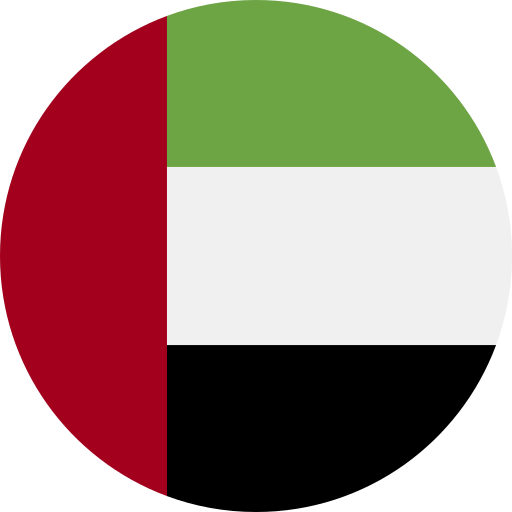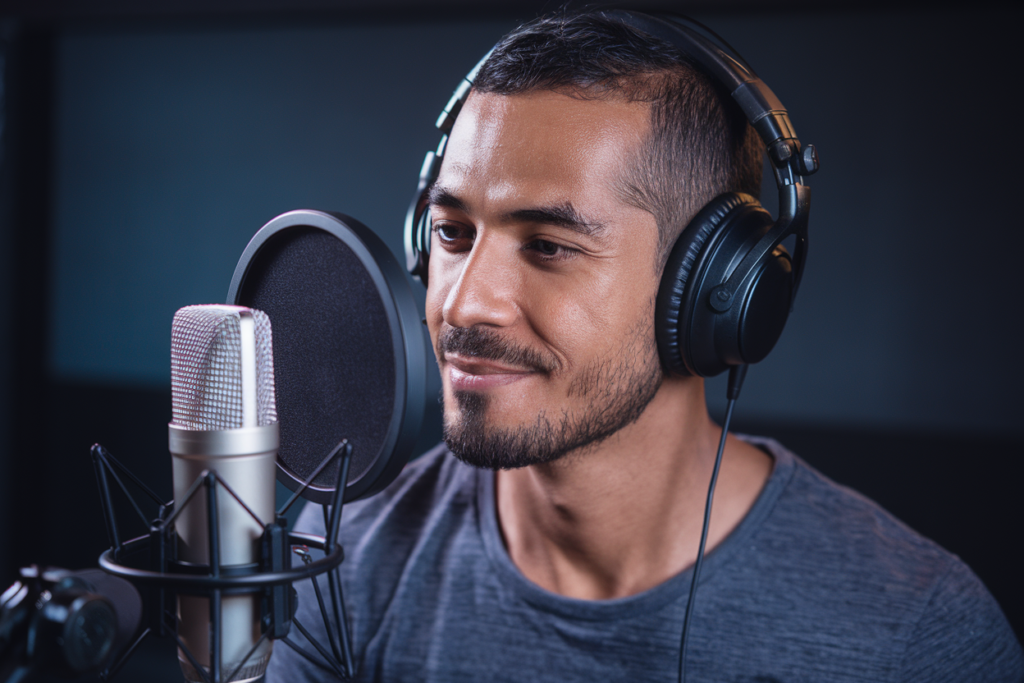Key Takeaways
- Widespread Use: Arabic is spoken by over 400 million people and serves as the official language in 22 countries, primarily in the Middle East and North Africa.
- Dialects Diversity: Arabic comprises numerous dialects, including Egyptian, Gulf, Levantine, and Maghrebi Arabic, each reflecting unique cultural nuances while sharing a connection to Modern Standard Arabic.
- Cultural Significance: The language is a vital part of identity for many individuals, embodying rich traditions and literary expressions across various regions.
- Economic Importance: Proficiency in Arabic is increasingly valuable in global commerce, particularly as businesses expand into Middle Eastern markets with economic powerhouses like Saudi Arabia and the UAE.
- Challenges to Adoption: Factors such as dialect diversity, educational focus on Modern Standard Arabic, globalization favoring English, political influences, and technological adaptation present challenges to widespread use of the language.
Have you ever wondered just how many nations use Arabic? This beautiful and complex language isn’t just limited to the Middle East; it’s a vital part of culture and identity across numerous countries. As one of the six official languages of the United Nations, Arabic holds significant importance on the global stage.
Overview Of Arabic Language
Arabic is a Semitic language with deep historical roots, spoken by over 400 million people worldwide. It’s not only the official language in 22 countries but also serves as a liturgical language for more than a billion Muslims. Its significance stretches beyond mere communication; it embodies cultural heritage and identity for many.
Arabic comprises several dialects, each reflecting regional nuances and variations. The most recognized form is Modern Standard Arabic, used in formal settings such as literature, media, and education. However, numerous local dialects exist across different nations like Egypt, Lebanon, and Morocco. These dialects can differ significantly from one another yet maintain mutual intelligibility to varying degrees.
The Arabic alphabet consists of 28 letters and is written from right to left. This unique script presents challenges for those unfamiliar with it but also adds to its distinctiveness. As you dive deeper into the world of Arabic, you’ll discover its rich vocabulary and expressive capacity.
Moreover, the global influence of Arabic extends into various fields including science, philosophy, art, and music. Understanding this language opens doors to learning about diverse cultures that have shaped human civilization throughout history.
In addition to being one of the six official languages of the United Nations, Arabic plays an essential role in international diplomacy and business relations across Middle Eastern countries. This underscores its importance not just regionally but on a global scale as well.
Whether you’re exploring professional opportunities or personal interests related to the Arabic language or culture, recognizing its widespread use enhances your understanding of today’s interconnected world.
Global Distribution Of Arabic
Arabic boasts a robust global presence, spoken across diverse regions and cultures. Understanding where it’s used provides insight into its significance.
Regions Where Arabic Is Spoken
Arabic is primarily spoken in the Middle East and North Africa, but its reach extends beyond these areas. You’ll find Arabic speakers in countries like Sudan, Somalia, and even parts of the Horn of Africa. Additionally, communities of Arabic speakers reside in Europe and the Americas due to migration patterns, contributing to a vibrant tapestry of cultural exchange.
Countries Where Arabic Is Official
Arabic serves as an official language in 22 countries. These nations include:
| Country | Region |
|---|---|
| Egypt | North Africa |
| Saudi Arabia | Middle East |
| Iraq | Middle East |
| Algeria | North Africa |
| Morocco | North Africa |
| Tunisia | North Africa |
| Jordan | Middle East |
| Lebanon | Middle East |
Each country showcases its unique dialects and variations while maintaining Modern Standard Arabic for formal communication. The rich diversity within these nations highlights how deeply embedded the language is in their culture and identity.
Arabic Dialects And Variations
Arabic features a rich tapestry of dialects, each reflecting the unique cultural nuances and historical contexts of its speakers. This variation enriches communication across different regions while maintaining a connection to Modern Standard Arabic.
Major Dialects In Different Regions
You’ll find several major dialects spoken in various regions, each with distinct characteristics. Here’s an overview:
- Egyptian Arabic: Predominantly spoken in Egypt, this dialect is widely recognized due to its influence in media and entertainment.
- Gulf Arabic: Found in countries like Saudi Arabia, UAE, and Kuwait, Gulf Arabic varies slightly among these nations but shares common traits.
- Levantine Arabic: Spoken in Lebanon, Syria, Jordan, and Palestine, Levantine Arabic has numerous regional variations yet retains mutual intelligibility among speakers.
- Maghrebi Arabic: This includes the varieties spoken in Morocco, Algeria, Tunisia, and Libya. These dialects have strong influences from Berber languages and French.
Each of these dialects not only serves as a means of communication but also embodies the identity and culture of its speakers.
Influence Of Local Languages
Local languages significantly shape the way Arabic is spoken in different areas. For example:
- Berber Languages: In North Africa (like Morocco), Berber languages blend with Maghrebi Arabic to create unique phrases and pronunciations.
- French Influence: The historical presence of France has left a mark on many Arab countries; thus, you’ll hear French terms mixed into everyday conversations.
The interplay between local languages and regional dialects leads to a vibrant linguistic landscape that illustrates how interconnected cultures can be within the wider Arab world. Understanding these variations enhances your appreciation for this diverse language family.
Importance Of Arabic Language
Arabic stands out as a crucial language globally, influencing millions through its rich cultural heritage and historical significance. With over 400 million speakers, it serves not only as a means of communication but also as a vital part of identity for many people.
Cultural Significance
Arabic connects individuals to their history and traditions. It acts as the primary medium for expressing literature, poetry, and philosophical ideas in the Arab world. Each dialect carries unique cultural nuances, reflecting local customs and lifestyles. For instance, Egyptian Arabic dominates media across the region, while Gulf Arabic showcases the economic dynamism of its speakers. Understanding these dialects enriches appreciation for diverse cultures within each nation.
Economic Impacts
The role of Arabic in global commerce is undeniable. As businesses expand into Middle Eastern markets, proficiency in Arabic becomes increasingly valuable. Countries like Saudi Arabia and the UAE have become economic powerhouses that attract investments from around the world. Speaking Arabic opens doors to opportunities in various sectors including trade, finance, and tourism; it fosters stronger relationships between partners by breaking down language barriers.
Recognizing the importance of Arabic isn’t just about understanding words; it’s about embracing a significant aspect of human connection that drives culture and economy forward.
Challenges Facing Arabic Language Adoption
Arabic language adoption faces several challenges that impact its widespread use.
Dialect Diversity
Dialect diversity complicates communication among Arabic speakers. With numerous dialects, such as Egyptian, Gulf, and Maghrebi Arabic, mutual understanding can be difficult. Each region’s unique expressions and vocabulary present barriers to clear dialogue.
Education Systems
Education systems in many Arab nations often emphasize Modern Standard Arabic over local dialects. While this approach fosters formal literacy, it may hinder everyday fluency in native contexts. Students might struggle to switch between the standard form and their spoken dialects.
Globalization Impact
Globalization introduces English as a dominant language in business and technology sectors. Many young Arabs favor English for international communication, reducing the perceived importance of Arabic in professional environments. This trend can lead to diminished proficiency over generations.
Political Factors
Political factors also influence language adoption. In some regions, tensions or conflicts can suppress the use of Arabic or promote other languages instead. The political landscape affects cultural identity tied to language use.
Technological Adaptation
Technological adaptation presents another hurdle for Arabic users. Despite advancements in digital platforms supporting various languages, not all software accommodates the nuances of written and spoken Arabic effectively. This gap creates frustration for users trying to engage with technology while using their native tongue.
These challenges illustrate the complexities surrounding Arabic language adoption across different contexts and communities.
Conclusion
Arabic’s role as a vital means of communication spans across numerous nations and cultures. Its significance goes beyond mere language; it’s a bridge connecting people to their heritage and traditions. In an increasingly interconnected world, understanding Arabic can unlock doors to rich cultural exchanges and economic opportunities.
As you explore the diverse dialects and regional nuances, you’re not just learning a language but embracing a profound aspect of human connection. The challenges facing Arabic today only underscore its resilience and relevance in global discourse. By recognizing the value of Arabic, you’re contributing to preserving this beautiful linguistic tapestry for future generations.
Frequently Asked Questions
What is the significance of the Arabic language globally?
Arabic is one of the six official languages of the United Nations, spoken by over 400 million people worldwide. It serves as an official language in 22 countries and a liturgical language for over a billion Muslims, highlighting its importance in culture, identity, and international relations.
How many dialects does Arabic have?
Arabic comprises several dialects that reflect unique cultural nuances and historical contexts. Major dialects include Egyptian, Gulf, Levantine, and Maghrebi Arabic. Despite these variations, Modern Standard Arabic is widely used for formal communication across different regions.
Where is Arabic primarily spoken?
Arabic is primarily spoken in the Middle East and North Africa but extends to regions like Sudan and Somalia. Additionally, growing Arabic-speaking communities exist in Europe and the Americas due to migration patterns.
Why is learning Arabic valuable for business?
Proficiency in Arabic can open doors to opportunities in trade, finance, and tourism within Middle Eastern markets. Countries like Saudi Arabia and the UAE are economic powerhouses where understanding the language can enhance professional prospects.
What challenges does the Arabic language face today?
Challenges include diverse dialects complicating communication among speakers and educational systems prioritizing Modern Standard Arabic over everyday fluency. Globalization has also led to English dominance in business, reducing interest in learning Arabic among younger generations.
How does the unique alphabet affect learning Arabic?
The unique Arabic alphabet consists of 28 letters written from right to left. While it presents challenges for new learners due to its script style and pronunciation differences from Latin-based alphabets, it also adds distinctiveness to the language’s identity.
What role does culture play in understanding Arabic?
Culture deeply intertwines with the Arabic language; it connects individuals to their history through literature, poetry, and philosophy. Understanding these cultural elements enriches comprehension of both contemporary issues and traditional values within Arab societies.







